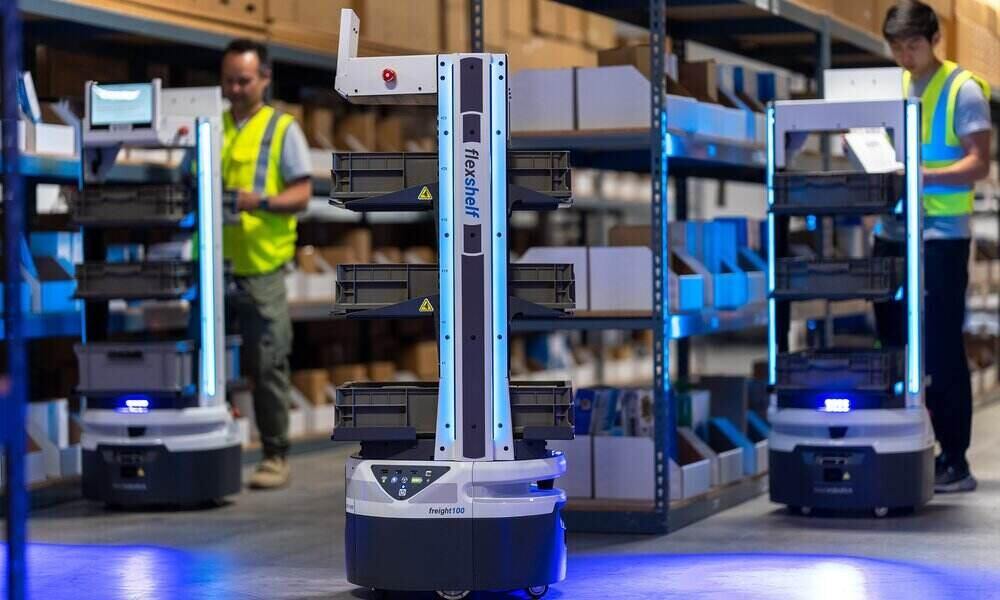
Robots have a lot to offer retailers if they use them in their warehouses. Not only to be faster and more agile, but also when it comes to facilitating their work for the operators who carry out their work in them. But not everyone is open, in principle, to installing them, nor are they aware of whether it would benefit them or not, or how much they would gain if they install them. In addition, they are not very well received in certain environments. For this reason, Zebra Technologies wants to help retailers make the decision that best suits them.
According to Melonee Wise, Vice President of Robotic Automation at Zebra Technologiespoints out in this regard that «There are some misunderstandings about how robots work, the benefits of working with them, and the amount of work that integration and management can entail. There is also an assumption that robots can be deployed in all warehouse environments without problems, or that their deployment and management through the cloud would cause operational, privacy and security issues, which is not entirely true. What may not be so obvious are the obstacles that can trip a robot, especially an autonomous mobile robot (AMR). Ladders? Pallets and forklift tines? A sudden fall on a loading dock? Water on the ground?
Considering that some autonomous mobile robots (AMRs) equipped with laser and sensor technologies that make them very aware of what their environment is like and what is in it, many robots still rely only on the single-plane laser that only allows them to “see” a small part of their environment . As a result, they cannot tell if steps or ramps are nearby. For this reason, Zebra Technologies recommends assessing whether the robotic technology they adopt in their facilities will work safely.
As stand-alone units with autonomous controls, AMRs can be deployed and managed in the cloud, unlike other automation solutions. Many AMRs are designed to be SaaS or Robo-as-a-Service (RaaS) solutions. That’s why they have 24/7 professional support, and these cloud-based AMRs can be up and running in hours or days.
Because the AMRs used in a manufacturing environment may be different than those intended for use in a warehouse, it is important to ask yourself several questions before adopting an AMR solution. The first, and most obvious, is whether robots are a good option for the warehouse, distribution center or factory of the company in which they are to be installed. To decide it, it is necessary to take into consideration if there is any type of obstacle or problem in the installations that hinders its installation or its operation, and if there are, work to find the solution so that the chosen robot can work without problems.
To make the decision, you also have to ask yourself what can be learned from a full-scale pilot. Thus, in many cases, in the rush to fill labor shortages or improve efficiency, decision makers can rely on what happens in a demonstration to know what the robotic system they are evaluating is like. But robots can behave very well in that environment, and in a real situation it may not be so. That’s why it’s a good idea to see how the solution works in a real production environment before making a decision. Especially with AMR and automated guided vehicles.
Another question to ask is what is needed to comply with current safety regulations. That is why it is necessary to confirm that both the provider and the chosen integration team have the knowledge and the will to apply the regulations in force. Otherwise, the company and the safety of the workers may be jeopardized.
To continue, it is necessary to assess whether the benefits of cloud-based robotic solutions are fully understood. Many companies are still finalizing their cloud strategies, and on-premises systems are still very present in supply chain environments. But all ERP, WMS, and manufacturing execution systems will soon be virtually all cloud-based. Therefore, it should be valued that robotic automation systems are also hosted or managed in the cloud, which allows and facilitates the integration of systems.
But it is also necessary to know what the company’s employees think about adopting robots to perform some tasks at the point where they work. Because interactions with them can be awkward and strange. Therefore, training is important to overcome their reticence and doubts when working with robots.
After having the answers to these questions, and analyzing them, retailers can now understand the options they have in the adoption of robotic systems in warehouses, but also in other areas and departments. With them you will also be able to understand how their installation and adoption will affect you, should you decide to do so. Also choose the most suitable robotic solution for the day to day of the warehouses and also of the company.



